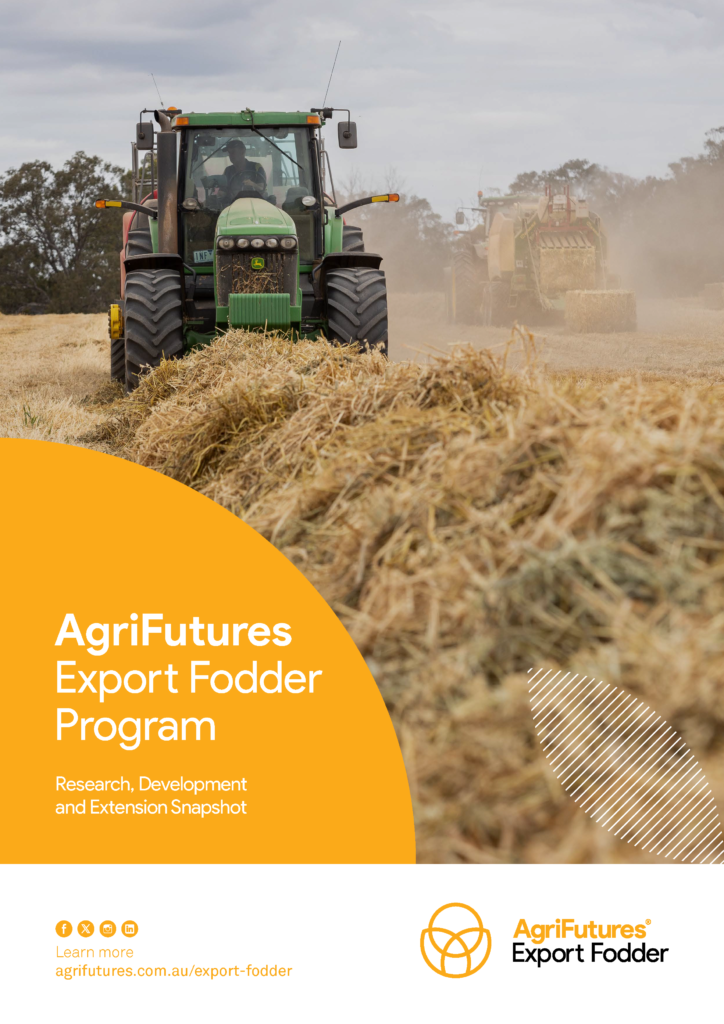The AgriFutures Export Fodder Program invests in research, development and extension (RD&E) that improves the productivity, profitability and sustainability of the Australian Export Fodder industry.
For more than 25 years, the Australian export fodder industry has supplied forage to countries around the world. Key export markets include Japan, Korea, China and Taiwan. Export fodder includes a wide range of crop and pasture species that are grown, harvested and lightly processed for both on-farm use and export. Export fodder production includes hay and silage of all types (pasture, cereal, lucerne, clover and others), chaff, vetch and pelletised feed.
Australia’s export fodder industry is now worth more than $500 million a year. Its growth has been thanks to a focus on producing high-quality fodder and delivering it to valuable global customers.
Despite this success, increasing global trade fragility has been identified as an immediate and future threat for the industry, with China not renewing a number of Australian export licences in early 2021. This highlights the need for ongoing development of new and existing export markets, as well as the need for industry adaptability to changing importing country bio-sanitary requirements.
Similar to other agricultural industries, the Australian export fodder industry faces the challenges of increasing resource scarcity and rising input costs. Agtech and big data innovations are potential solutions to some of these challenges. Consultation with industry stakeholders has highlighted the need to ensure that investment through the AgriFutures Export Fodder Program supports innovation and adoption across the supply chain to ensure the ongoing productivity, profitability and sustainability of the industry.
A continued investment into export fodder research will ensure the industry addresses current and future priorities with a focus on producing high-quality fodder and delivering it to valuable global customers.
We are committed to working closely with all those involved in the export fodder industry, including Advisory Panels and industry associations to identify research priorities and make Program investments which will have the greatest impact on the industry.





